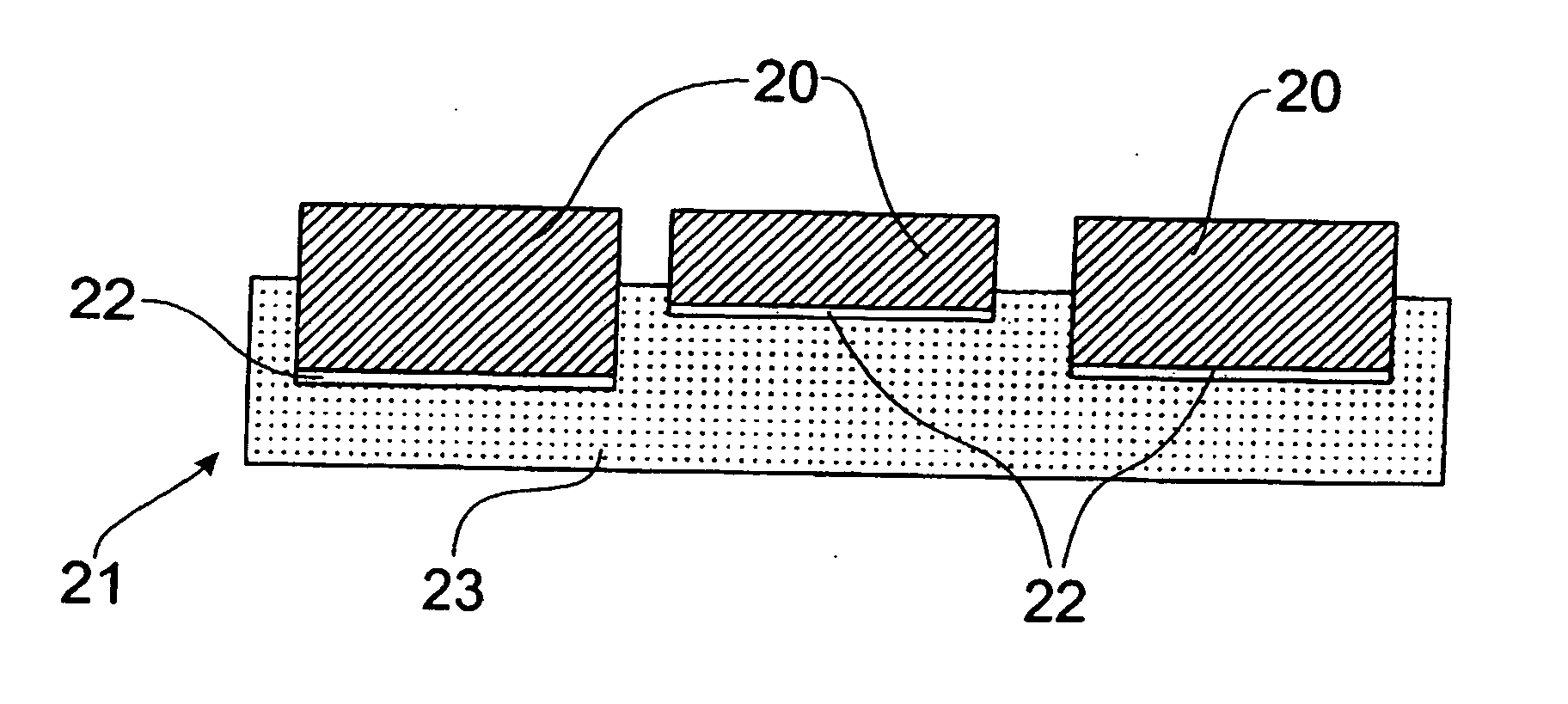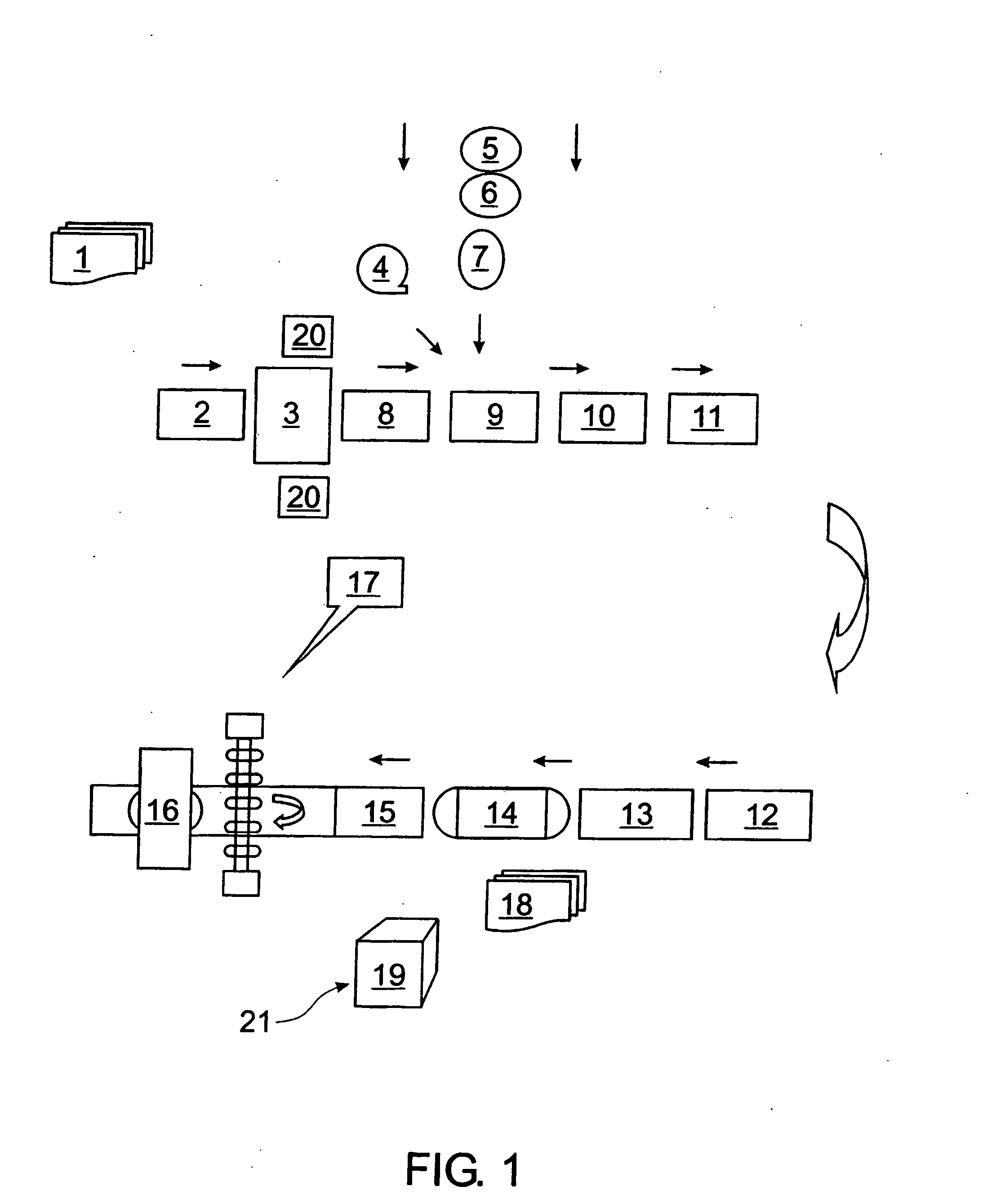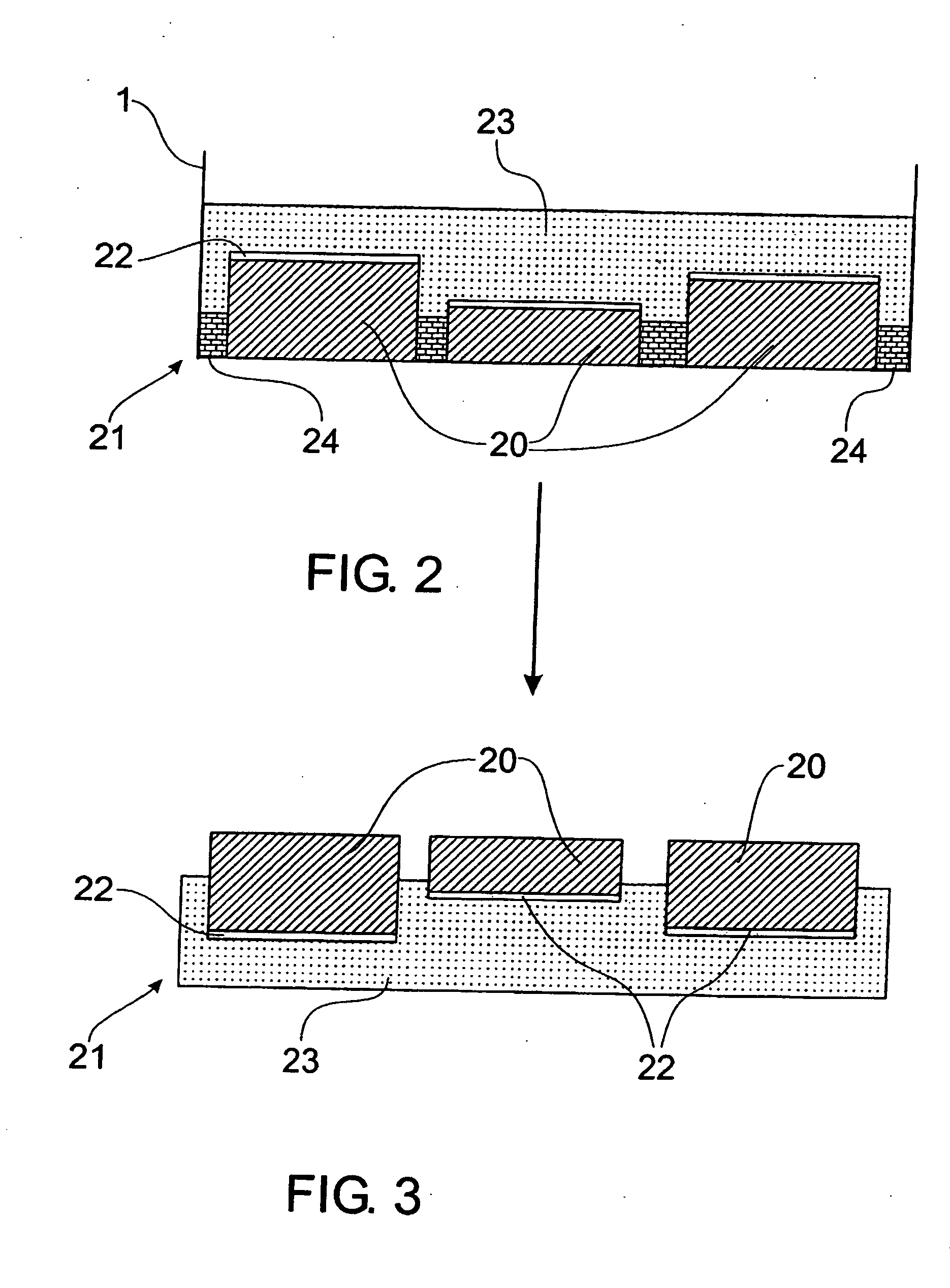Methods for making composite tiles
a composite tile and tile technology, applied in the direction of lamination, building components, decorative arts, etc., can solve the problems of increased labor, increased cost, and increased skill required for laying
- Summary
- Abstract
- Description
- Claims
- Application Information
AI Technical Summary
Benefits of technology
Problems solved by technology
Method used
Image
Examples
Embodiment Construction
[0120]FIG. 1 is a flow diagram representing the steps in manufacturing an ungrouted composite tile, such as the tile 21 shown in FIGS. 2 and 3. Numerals 2-19 are shown only in FIG. 1.
[0121] A shallow mould or pan 1, having a base area of 500 mm×500 mm is placed on a conveyor belt 2 sprayed with a release agent such as form oil and transported to a layup station 3. Once the pan 1 reaches the layup station 3, stone elements (such as slate) 20 are arranged within the pan 1 to achieve a random pattern.
[0122] The stone elements 20 may either be cut to size but preferably randomly shaped fragments of stone are simply fitted into the pan 1 to achieve a random pattern. The stone elements 20 are spaced slightly apart from one another, and the preferred face of each stone element 20 is placed face down within the pan 1.
[0123] Once the stone elements 20 have been arranged within the pan 1, the pan 1 is conveyed to an applicator 8 that adds an inert displacer 24, typically talcum powder or f...
PUM
| Property | Measurement | Unit |
|---|---|---|
| thickness | aaaaa | aaaaa |
| shape | aaaaa | aaaaa |
| shapes | aaaaa | aaaaa |
Abstract
Description
Claims
Application Information
 Login to View More
Login to View More - R&D
- Intellectual Property
- Life Sciences
- Materials
- Tech Scout
- Unparalleled Data Quality
- Higher Quality Content
- 60% Fewer Hallucinations
Browse by: Latest US Patents, China's latest patents, Technical Efficacy Thesaurus, Application Domain, Technology Topic, Popular Technical Reports.
© 2025 PatSnap. All rights reserved.Legal|Privacy policy|Modern Slavery Act Transparency Statement|Sitemap|About US| Contact US: help@patsnap.com



